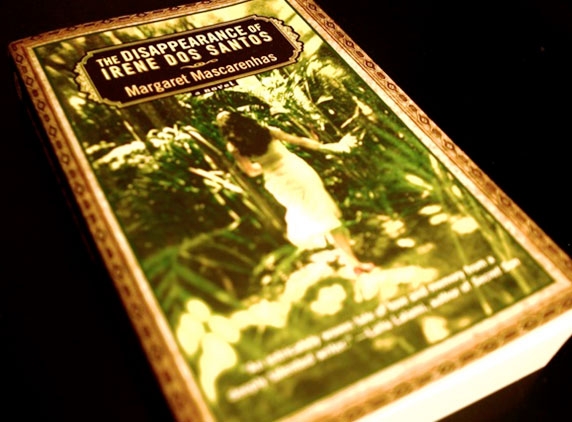Sahitya Wishesh: The Disappearance of Irene Dos Santos by Margaret Mascarenhas
March 25, 2013 09:50
"Staggering confusion between Chinese philosopher Zhuangzi and a butterfly forms the basic premise"
The Chinese philosopher Zhuangzi identified a fundamental confusion when he related a dream in which he was a butterfly. On rousing, he wondered if he was Zhuangzi who had dreamt he was a butterfly, or a butterfly dreaming he was Zhuangzi.
Fact-fully, Margaret Mascarenhas embraces this confusion and makes it beautiful in her remarkable second novel .
To move forward....
The story begins with Lily Nathifa Amparo pregnant and surrounded by loving family, who slips and falls to the floor exposing both her baby and herself to danger. The novel is loosely constructed around the framework of nine nights, nine novenas said to the Venezuelan native goddess Maria Lionza, to ease the baby’s safe entry into the world. The novenas are accompanied by stories told by different members of the family, rich in Spanish utterance, that offer a vibrant study of day-to-day life in Venezuela, always one revolution away from social justice.
The novel begins and returns to the "hormone-induced borderline psychotic schoolgirl” chatter of Lily and her best friend Irene. Screaming the narratives is the mystery of Irene Dos Santos, tempestuous beauty, who vanishes in the rainforest one afternoon when both girls are 15. Not knowing what happened bothers Lily, leaving her incomplete, unresolved, part of a never-ending story.
Poetic and lyrical through it's magical realism...
Notwithstanding telling the stories of revolutionaries and minority tribes, brilliantly fleshed out through the irresistible people’s poet Ismael, and the mystic out-of-body projectionist boy that is Efrain, this novel is, to use Alice Walker’s coinage, womanist writing while at its heart are the womanist subjects of family and birthing, telenovelas, romantic love, and worship.
Magical realism seems a natural accompaniment to the spirit of this world where the native goddess Maria Lionza floats within touching distance throughout, in her two incarnations: naked and riding a tapir, or as the blue mantled Virgin figure. Of Irene Dos Santos we are told, "like a latter-day Maria Lionza, she lived a thousand lives." Which of them Irene chooses to make the real one, Mascarenhas seems to say, with her kaleidoscopic artistic piece of memories, is all that matters in the end.
Poetic and lyrical, the novel aspires to create an impressive array of metaphor, mysticism, and reality within the juxtaposition of 8 protagonists, each portraying their own stories of love, power, loss, ghosts, magic and their political convictions or lack thereof. Being powerfully adventurous in technique and style, strong appeal and exotic in locale and history, this novel appeals to the sense like the passion flower that Mascarenhas uses metaphorically throughout the novel.
It,s indeed fascinating to read!
(An adaptation from online resources)
Image source: online search with the book name.
(AW:Samrat Biswas)








